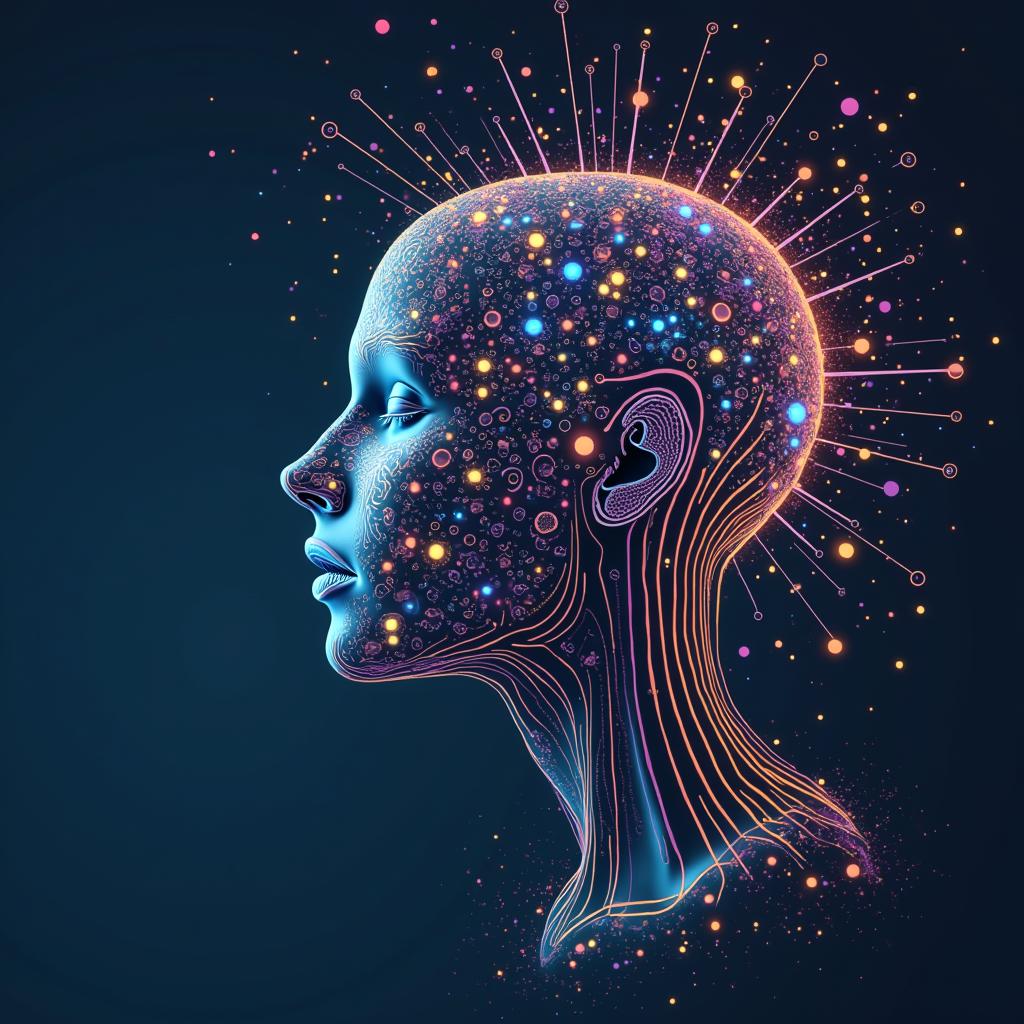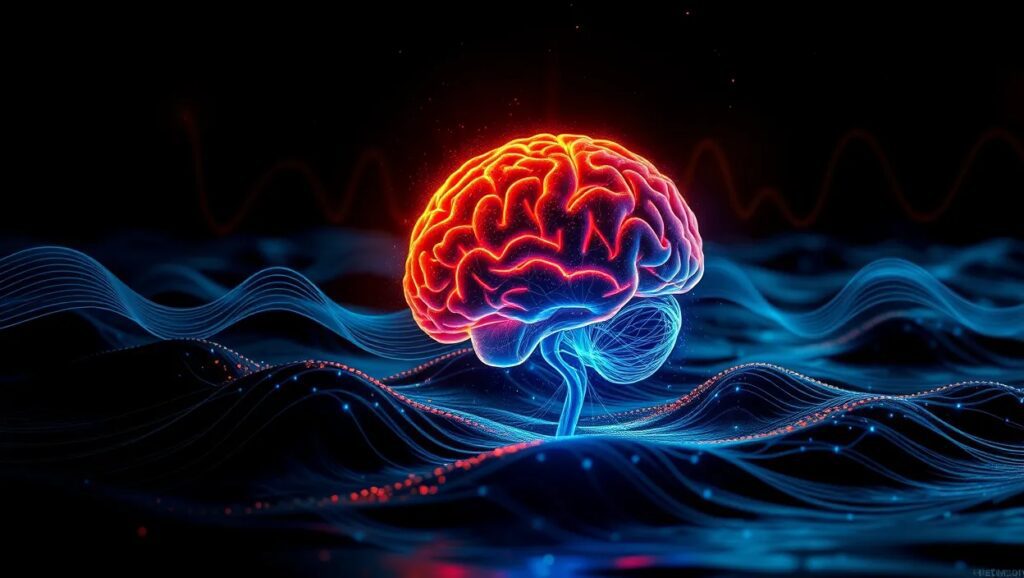
What is Affective Computing?
Understanding the Basics
Affective computing is the interdisciplinary study of technology that recognizes, interprets, and simulates human emotions. It bridges the gap between human feelings and artificial intelligence (AI).
The goal? Equip systems with the ability to sense and respond to emotional cues. This involves technologies like facial expression analysis, voice modulation detection, and sentiment analysis algorithms.
Why It Matters Today
Mental health challenges are on the rise, and traditional methods often fall short of delivering timely, personalized care. Enter affective computing—a field that’s not just technical but deeply human. By integrating emotional intelligence into tech, we can offer more empathetic, data-driven support.
How Affective Computing Supports Mental Health
Real-Time Emotional Tracking
Affective computing enables real-time monitoring of emotional states. Sensors and devices analyze:
- Tone of voice during conversations
- Facial expressions via webcams or smartphones
- Behavioral patterns like typing speed or mouse movements
For individuals managing conditions like anxiety or depression, this insight is revolutionary. Imagine an app alerting someone when their stress levels spike—right before they feel overwhelmed.
Bridging Communication Gaps
Many people struggle to articulate their mental health struggles. Affective tools can pick up on unspoken cues, helping therapists understand what words might not reveal. Tools like sentiment analysis in chatbots make conversations more authentic, even if the “listener” isn’t human.
AI-Powered Therapy Tools
Personalized Virtual Therapists
AI-driven systems like Woebot or Replika utilize affective computing to simulate empathetic conversations. They analyze user emotions to tailor their responses, offering support that feels personal and relevant.
While not a replacement for human therapists, these tools can provide critical support in between sessions or for those lacking access to professional care.
Biofeedback in Therapy
Affective computing integrates seamlessly with wearable devices like Fitbit or Apple Watch. These wearables monitor physiological markers—like heart rate or skin conductance—providing biofeedback during therapy. This real-time data enhances therapeutic interventions, helping clients become more self-aware.
Applications in Early Detection

Spotting Signs Before Crisis Strikes
One of the most promising aspects of affective computing is its potential for early intervention. By continuously analyzing emotional patterns, these systems can identify red flags, such as prolonged sadness or heightened anxiety, long before they escalate into a crisis.
For example:
- Schools could use this tech to monitor students for signs of mental distress.
- Workplace tools could flag employees at risk of burnout, prompting preventive action.
Supporting Underserved Communities
Communities with limited access to mental health professionals can benefit immensely. Smartphones equipped with emotion-sensing apps bring mental health resources right into the user’s hands, democratizing care access.
Ethical Considerations in Affective Computing
Data Privacy Concerns
Emotion-sensing technology relies on deeply personal data. This raises questions about data privacy and ethical boundaries. Companies need transparent policies to ensure user trust.
Balancing Empathy and Automation
Critics argue that no technology can truly replicate human empathy. While affective computing tools are powerful, they should complement—not replace—human interactions. Ensuring balance will be key to sustainable adoption.
Challenges and Limitations of Affective Computing in Mental Health
Accuracy of Emotional Recognition
While affective computing has immense potential, its accuracy isn’t foolproof. Emotions are complex, often expressed differently across cultures, contexts, or even individuals. A sarcastic tone or a neutral expression could be misinterpreted as negative emotion by the AI.
This limitation can lead to false positives or missed emotional cues, impacting the reliability of mental health applications. Developers are actively working to improve algorithms, but the journey to true emotional intelligence is ongoing.
Bias in Data Collection
AI systems are only as unbiased as the data they are trained on. If the dataset lacks diversity, the technology may struggle to recognize emotions in underrepresented groups. For example, studies have shown that facial recognition systems often perform less accurately on individuals with darker skin tones.
This disparity can hinder equitable access to mental health solutions, particularly for marginalized communities. Addressing these biases is crucial for widespread adoption.
The Role of Wearable Technology
Emotional Data at Your Fingertips
Wearable devices like smartwatches and fitness trackers are pivotal in affective computing. They capture emotional indicators such as:
- Heart rate variability (HRV), a marker of stress and anxiety
- Sleep patterns, linked closely with emotional well-being
- Galvanic skin response (GSR), which measures sweat gland activity during emotional arousal
This data can be synced with mental health apps to provide actionable insights. For example, if a device detects rising stress levels, it might prompt the user to take a break or practice mindfulness.
Encouraging Behavioral Changes
By offering real-time feedback, wearables empower users to make informed choices. Imagine receiving a nudge like, “You seem stressed—take 5 minutes to breathe.” Over time, these small changes can lead to significant mental health improvements.
Breakthroughs in Emotional AI and Therapy
Advanced Chatbots for Emotional Support

Traditional chatbots have evolved into emotionally intelligent companions. These advanced systems analyze user language for sentiment and adjust their tone accordingly. For instance:
- When a user expresses sadness, the chatbot responds with warmth and empathy.
- If a user sounds agitated, the system may offer calming exercises.
These bots are particularly valuable for individuals hesitant to seek human therapy, providing a judgment-free space to open up.
Virtual Reality for Emotional Processing
Virtual reality (VR) is becoming a key player in mental health care. Affective computing enhances VR experiences by tailoring scenarios to the user’s emotional state. Applications include:
- Exposure therapy for phobias, where environments adapt based on fear levels
- Guided meditation sessions, customized to soothe heightened anxiety
This immersive approach offers a safe, controlled space for emotional exploration and healing.
Future Trends in Affective Computing

Integration with Everyday Devices
Imagine a future where affective computing is seamlessly integrated into smartphones, smart home systems, and even vehicles. Your car might detect frustration in your voice during traffic and suggest calming music.
This ubiquitous adoption could revolutionize how mental health is monitored and supported, transforming everyday interactions into therapeutic opportunities.
AI Coaches for Preventive Care
The next wave of innovation may include AI wellness coaches, combining affective computing with preventive care strategies. These digital companions could proactively recommend lifestyle adjustments, track emotional trends, and offer resources to maintain mental well-being.
Collaboration Between Tech and Mental Health Experts
The Need for Cross-Disciplinary Teams
To truly revolutionize mental health care, tech developers and mental health professionals must collaborate. Clinicians can provide insights into emotional dynamics, ensuring that tools are both effective and ethical.
Fostering Trust in the Technology
Adoption hinges on trust. Transparent development practices, along with user education, are critical for encouraging widespread use of affective computing tools. Open dialogue about benefits, limitations, and ethical considerations will be key.
Closing Thoughts: Transforming Mental Health Care
Affective computing has the power to bridge gaps in mental health care, offering tools that are intuitive, personalized, and accessible. While challenges remain, the synergy of emotional AI and human expertise promises a brighter, more empathetic future for mental health support.
By leveraging technology that understands us on an emotional level, we’re not just innovating—we’re transforming how the world approaches mental well-being.
FAQs
Can emotion-sensing tools help in crisis situations?
Yes, affective computing can detect early warning signs of a mental health crisis. For instance, a chatbot might identify patterns of suicidal ideation through user conversations and alert a trusted contact or mental health professional.
Similarly, wearables monitoring stress levels might prompt the user to seek help before emotions spiral out of control. These tools act as a safety net, though immediate human intervention is still vital in emergencies.
Can affective computing address cultural differences in emotional expression?
Affective computing is still grappling with the challenge of recognizing cultural nuances in emotional expression. People from different cultures may express emotions like joy, anger, or sadness in distinct ways, which can affect the accuracy of these systems.
For example, while a broad smile may universally signify happiness, subtle facial or vocal cues might differ between cultures. Developers are working to build diverse datasets that account for these differences, ensuring the technology is inclusive and accurate.
How do wearable devices use affective computing in mental health?
Wearables like smartwatches or fitness trackers employ affective computing to monitor physiological signals related to emotional states. They measure parameters like:
- Heart rate variability (HRV): Indicates stress or relaxation.
- Skin temperature and conductance: Tracks arousal or anxiety levels.
- Sleep patterns: Reflect overall mental well-being.
For instance, if a user experiences elevated stress levels, their device might suggest deep breathing exercises or recommend a mindfulness app. Over time, this personalized feedback can improve emotional awareness and resilience.
How do affective computing tools help children and adolescents?
Children and adolescents often find it challenging to articulate their emotions. Affective computing can fill this gap by interpreting behavioral and physiological signals to understand their mental state.
For example, in schools, systems equipped with affective computing might monitor students’ engagement levels during lessons or flag signs of distress for early intervention. This can be particularly beneficial for children with autism, helping caregivers understand emotional cues that might otherwise go unnoticed.
Are there any success stories with affective computing in mental health?
Yes, several! Affective computing is already making a difference in areas like therapy and early detection:
- Woebot: An AI-powered chatbot that uses emotional analysis to provide conversational support and cognitive behavioral techniques. Many users report feeling less isolated after using it.
- Ellie, the Virtual Therapist: Developed by DARPA, Ellie reads microexpressions and vocal tones to assist in diagnosing PTSD in veterans.
These examples demonstrate how affective computing is bridging gaps in mental health care by providing scalable, empathetic support.
How can businesses use affective computing to support employee mental health?
Organizations are increasingly turning to affective computing to improve workplace well-being. Tools like emotion-sensing wearables and apps can identify signs of burnout or stress in employees.
For example, a company might implement software that tracks emotional trends during virtual meetings, offering anonymous feedback to managers. Such systems help create a supportive work culture by prompting timely interventions, like offering mental health days or wellness programs.
Are there risks of over-reliance on affective computing?
Over-reliance on emotion-sensing technology can lead to problems if users begin to prioritize AI insights over personal intuition or professional advice. For instance, someone might skip a therapy session, trusting their wearable’s data even when they feel emotionally unwell.
Moreover, systems can sometimes misinterpret emotions, leading to frustration or mistrust. This underscores the need for these tools to be used as supplements—not replacements—for human judgment and care.
What role does natural language processing (NLP) play in affective computing?
NLP is a core component of affective computing, particularly in analyzing text or speech for emotional cues. It examines:
- Word choice (e.g., “overwhelmed” vs. “content”).
- Sentence structure and tone.
- Frequency of emotionally charged phrases.
For instance, an AI-powered chatbot might detect sadness in a user’s repeated use of words like “lonely” or “stressed” and adjust its responses to offer comfort. NLP makes AI interactions more empathetic and meaningful.
How can schools leverage affective computing for mental health?
Schools can integrate affective computing to monitor and support students’ emotional well-being. For example:
- Smart classroom tools might track student engagement and flag those showing signs of stress or detachment.
- Emotion-sensing apps could encourage mindfulness exercises for students struggling with anxiety.
This proactive approach helps educators address mental health challenges early, fostering a healthier learning environment.
What are the future ethical challenges of affective computing?
As affective computing becomes more advanced, new ethical dilemmas may arise, such as:
- Emotional manipulation: Companies could use emotional data to influence consumer behavior, crossing ethical boundaries.
- Consent in public spaces: Emotion-sensing cameras in public might analyze emotions without explicit consent.
For instance, a retail store might use facial recognition to track customer satisfaction, raising questions about privacy. Establishing global standards for ethical use will be critical as the technology evolves.
Affective computing holds immense promise, but ongoing research, education, and ethical vigilance are essential to ensure its responsible and impactful application.
Resources
Books
- “Affective Computing” by Rosalind W. Picard
This foundational book by one of the pioneers in affective computing explores how machines can recognize and simulate emotions.
Available on MIT Press - “Emotion AI: The Intersection of Affective Computing and Mental Health” by Christian Wagner
A deep dive into how AI intersects with emotional well-being, covering real-world applications and ethical considerations.
Research Papers
- “The Role of Affective Computing in Mental Health Monitoring and Interventions”
This paper provides a comprehensive review of emotion-sensing technologies in mental health care. Read on SpringerLink. - “Emotion Recognition Using Wearable Sensors: A Review”
Explores how wearables contribute to affective computing with insights into current advancements. Find it on ResearchGate.
Websites and Organizations
- Affectiva
A leading company specializing in emotion AI and facial expression analysis. They offer resources on emotion-sensing tech.
Visit Affectiva - Emotion AI Hub
An online platform that provides tools, case studies, and resources for understanding affective computing.
Explore Emotion AI Hub - Mental Health Innovation Network
Focused on digital mental health advancements, including affective computing.
Discover Resources
Courses and Tutorials
- “Introduction to Affective Computing” on Coursera
Learn the basics of affective computing and its applications in mental health. This course is designed for beginners.
Join on Coursera. - “Emotion AI: Building Systems That Understand Emotions”
Offered by Udemy, this hands-on course dives into coding emotion recognition algorithms.
Start Learning on Udemy
Apps and Tools
- Woebot
An AI-powered chatbot that uses affective computing to provide mental health support.
Download Woebot - Moodpath
A mental health app that integrates affective computing for personalized emotional insights and exercises.
Access Moodpath - Emotient (now part of Apple)
Offers emotion recognition technology used in various applications, from healthcare to education.
Videos and Talks
- “Can Machines Understand Our Emotions?” by Rosalind Picard (TED Talk)
A brilliant introduction to the concept and potential of affective computing.
Watch on TED - “Affective Computing in Mental Health” (YouTube Lecture)
This free lecture discusses current and future trends in emotion AI for mental health care.


